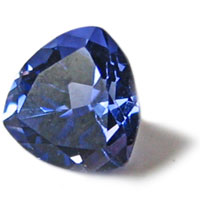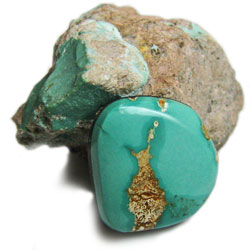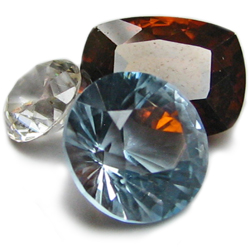
December

Tanzanite
Tanzanite is a stunning blue variety of the mineral zoisite. A relative newcomer in the gem world, it was discovered by a Masai tribesman in Tanzania and first mined in 1967 by a prospector named Manuel d’Souza who originally thought he was mining sapphire. The crystal was soon identified as a vibrant blue variety of zoisite, a mineral that had been around since the early 1800s, which is usually brown in color. Tiffany & Co. named the gem tanzanite and to date Tanzania is the only location in the world where this blue gem is found. Trace amounts of vanadium, mixed with extreme heat, cause the blue color. Tanzanite’s pleochroism can make the gem display different colors when viewed from different angles. Stones must be cut properly to highlight the more attractive blue and violet hues and most tanzanite is heat-treated to enhance those colors.
Turquoise is comprised of aluminum phosphate and copper. This popular gem is found in arid regions where rainwater dissolves copper in the soil, forming blue nodular deposits when it combines with aluminum and phosphorus. Iron and chromium add green to turquoise, producing a blue-green stone. Turquoise may contain pieces of host rock, called matrix, that appear as dark webs or patches in the stone. Generally the presence of matrix lowers the stone’s value, stones with no matrix at all command the highest prices, but many prefer turquoise with the matrix to give it character.
Other December Birthstones


Print